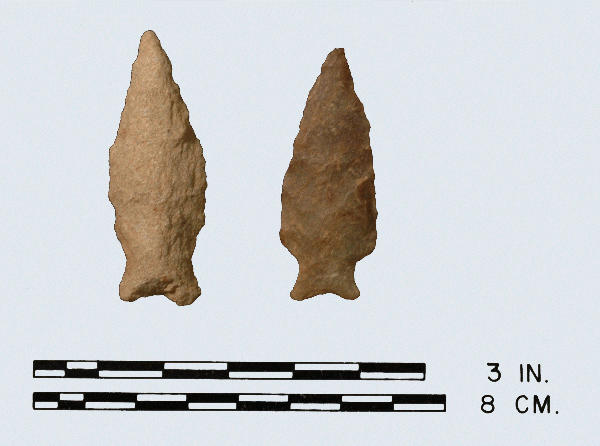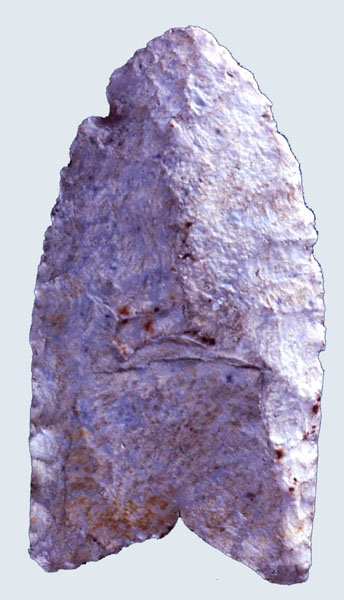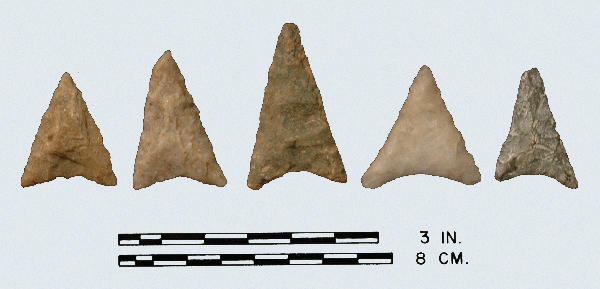
Orient Fishtail: quartzite, chert.
Type Corner Notched Late-Archaic
Defining Attributes
The Orient Fishtail is a slender, medium sized, gracefully formed point, with a characteristically narrow, lanceolate blade which merges into a flaring “fishtail” stem.
Chronology
The Orient Fishtail point dates to the Late Archaic to Early Woodland transition, 1400 to 800 BCE. Ritchie (1971) notes that this point is the characteristic type of the Orient complex on Long Island, New York which was radiocarbon dated to between 1044 +/- 300 to 763 +/- 220 BCE.
Description
- Blade: The blade is narrow and lanceolate in outline. The cross section may be biconvex or nearly flat. The edges are excurvate.
- Base: Sloping shoulders merge into a flaring stem with an incurvate base. Less often, the base is straight and slightly smoothed.
- Size: Length ranges from 30 to 101 mm with an average of 63mm. Width ranges from 20 to 25 mm. Thickness ranges from 5 to 11 mm.
- Technique of manufacture: Carefully flaked from a long preform by a combination of soft percussion and pressure retouching.
Discussion
The Orient Fishtail point has not been found in dated context in Virginia. McAvoy feels that the point may date from a Late Archaic to Early Woodland context along the Nottoway River. The type is commonly found with soapstone vessel fragments and has also been found with early pottery in the Northeast.
Defined in Literature
This type was originally defined by Ritchie (1961 revised 1971) based on points recovered from the Orient complex on Long Island in New York.
References



